ART NEWS:Oct.04
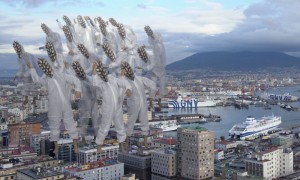 Mathilde Rosier’s work stems from her interest in the physical and psychological experience of ancient rites and rituals. Through the combination of painting, film, dance and theatre, Rosier constructs dreamlike situations that allow the beholder to lose any sense of space and time, opening a portal between conscious and unconscious realms. Her video installation “Le massacre du printemps” makes its international premiere. The work is a reinterpretation of “The Rite of Spring” a ballet with music by Igor Stravinsky, choreographed by Vaslav Nijinsky for the Ballets Russes in 1913. The artist questions the intrinsic relationship between human beings and the environment, connecting the act of worship of the earth to that of its subsequent exploitation. The dancers draw aerial choreographies against the backdrop of three different locations in the region of Campania – the greenhouses of the Vesuvian area, the port of the city of Naples and the former industrial site of the Bagnoli plain – and from farmers they are transformed into ears of wheat, underlining the inseparable link between the destiny of humanity and that of all nature. Info; Curator: Andrea Viliani, Museo Madre, Via Luigi Settembrini, 79, Napoli, Duration: 24/10-16/11/2020, Days & Hours: Mon & Wed-Sat 10:00-19:30, Sun 10:00-20:00, www.madrenapoli.it
Mathilde Rosier’s work stems from her interest in the physical and psychological experience of ancient rites and rituals. Through the combination of painting, film, dance and theatre, Rosier constructs dreamlike situations that allow the beholder to lose any sense of space and time, opening a portal between conscious and unconscious realms. Her video installation “Le massacre du printemps” makes its international premiere. The work is a reinterpretation of “The Rite of Spring” a ballet with music by Igor Stravinsky, choreographed by Vaslav Nijinsky for the Ballets Russes in 1913. The artist questions the intrinsic relationship between human beings and the environment, connecting the act of worship of the earth to that of its subsequent exploitation. The dancers draw aerial choreographies against the backdrop of three different locations in the region of Campania – the greenhouses of the Vesuvian area, the port of the city of Naples and the former industrial site of the Bagnoli plain – and from farmers they are transformed into ears of wheat, underlining the inseparable link between the destiny of humanity and that of all nature. Info; Curator: Andrea Viliani, Museo Madre, Via Luigi Settembrini, 79, Napoli, Duration: 24/10-16/11/2020, Days & Hours: Mon & Wed-Sat 10:00-19:30, Sun 10:00-20:00, www.madrenapoli.it
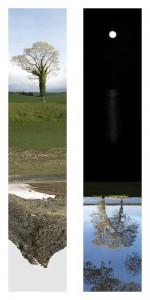 In “Pipelines and Permafrost”, Mary Mattingly exhibits a series of photographs that are driven by an urgency to document the speed of climate change and habitat fragmentation through images that appear as fluid timelines. These photographs interpret changes in land over geologic time (based on fossil records) in order to describe a place through its deep history. They also speculate on near futures as witness to an exponential speeding-up of geologic time due to human-induced climate change. “Pipelines and Permafrost” was also driven by hope: hope that arises when people work together to combat destruction of a land base. It honors water, land, and forest protectors around the world who have fought for the rights of nature against increased industrialization. Many are Indigenous Peoples (or are in alliance) fighting to protect their nations and homelands against exploitation, many have struggled against extractive mining operations, logging corporations, and industrial agriculture to protect primary forests, conserve animal habitats, plant species, and water. Info: Robert Mann Gallery, 14 East 80th Str., New York, Duration: 26/10-31/12/2020, Days & Hours: By appointment only, www.robertmann.com
In “Pipelines and Permafrost”, Mary Mattingly exhibits a series of photographs that are driven by an urgency to document the speed of climate change and habitat fragmentation through images that appear as fluid timelines. These photographs interpret changes in land over geologic time (based on fossil records) in order to describe a place through its deep history. They also speculate on near futures as witness to an exponential speeding-up of geologic time due to human-induced climate change. “Pipelines and Permafrost” was also driven by hope: hope that arises when people work together to combat destruction of a land base. It honors water, land, and forest protectors around the world who have fought for the rights of nature against increased industrialization. Many are Indigenous Peoples (or are in alliance) fighting to protect their nations and homelands against exploitation, many have struggled against extractive mining operations, logging corporations, and industrial agriculture to protect primary forests, conserve animal habitats, plant species, and water. Info: Robert Mann Gallery, 14 East 80th Str., New York, Duration: 26/10-31/12/2020, Days & Hours: By appointment only, www.robertmann.com
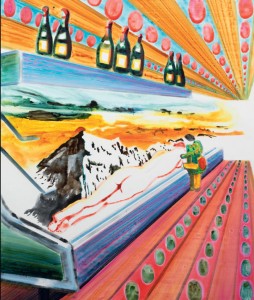 Revolving around issues of consumption and goods in transit, John Kørner’s exhibition “Crazy Watermelon” Shipping” examines the global market and how we experience it in everyday life, say at the supermarket when we debate what items to place in our baskets. Some people have only one option when it comes to shopping, others have a few more, while others again have nothing but shopping options. Kørner, who lives in Nørrebro, Copenhagen, belongs to the last group. He has options galore: greengrocers and specialty shops running the gamut from caramel maker to Polish takeaways, on top of the regular supermarkets. As the artist puts it, each contains a whole world. Not only the packaging or the merchandise itself provide an illusion of origin, provenance and the culture of the country where the watermelon is from. The goods are wrapped in a rhetoric and a visual style designed to seduce and fascinate us as consumers. The story is usually one of “authenticity and romance”. The powerful sensory experience of shopping at a supermarket or greengrocer also has a dark side of labour exploitation and depletion of natural resources. Info: Galleri Bo Bjerggaard, Flæsketorvet 85 A, Copenhagen, Duration: 29/10-21/11/2020, Days & Hours: Tue-Fri 13:00-18:00, Sat 12:00-16:00, www.bjerggaard.com
Revolving around issues of consumption and goods in transit, John Kørner’s exhibition “Crazy Watermelon” Shipping” examines the global market and how we experience it in everyday life, say at the supermarket when we debate what items to place in our baskets. Some people have only one option when it comes to shopping, others have a few more, while others again have nothing but shopping options. Kørner, who lives in Nørrebro, Copenhagen, belongs to the last group. He has options galore: greengrocers and specialty shops running the gamut from caramel maker to Polish takeaways, on top of the regular supermarkets. As the artist puts it, each contains a whole world. Not only the packaging or the merchandise itself provide an illusion of origin, provenance and the culture of the country where the watermelon is from. The goods are wrapped in a rhetoric and a visual style designed to seduce and fascinate us as consumers. The story is usually one of “authenticity and romance”. The powerful sensory experience of shopping at a supermarket or greengrocer also has a dark side of labour exploitation and depletion of natural resources. Info: Galleri Bo Bjerggaard, Flæsketorvet 85 A, Copenhagen, Duration: 29/10-21/11/2020, Days & Hours: Tue-Fri 13:00-18:00, Sat 12:00-16:00, www.bjerggaard.com
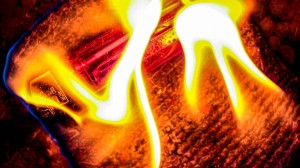 The German video artist and filmmaker Mario Pfeifer presents “Negotiating the Law”, at the center of the exhibition is “Zelle 5 – 800° Celsius: Act 1–2” a multimedia installation and performance. Through the artistic reworking of forensic materials and investigative strategies related to the deeply troubling case of the death of Oury Jalloh, a Sierra Leonean asylum seeker in Germany, the work aims to spark discussion about the coexistence of visual evidences, racism and institutional violence, and the importance of civil activism. The artist has closely collaborated with activists from Break the Silence, an initiative in remembrance of Jalloh that continues the investigation into his 2005 case, which remains one of Germany’s largest police controversies in relation to accusations of institutional racism. On 7/1/2005, Oury Jalloh burned to death in detention cell 5 of the Dessau-Roßlau police station, and almost sixteen years later the case is still widely debated both juridically and in the media. Pfeifer’s installation not only provides insight into the production of the visual evidence used to build the case but also allows protagonists from politics, the judicial system, and civil right movements to speak up and introduce their evidence, in a space entirely dedicated to representing their findings. Info: Edith-Russ-Haus for Media Art, Katharinenstraße 23, Oldenburg, Duration: 29/10/2020-10/1/2021, Days & Hours: tue-Fri 14:00-18:00, Sat-Sun 11:00-18:00, www.edith-russ-haus.de
The German video artist and filmmaker Mario Pfeifer presents “Negotiating the Law”, at the center of the exhibition is “Zelle 5 – 800° Celsius: Act 1–2” a multimedia installation and performance. Through the artistic reworking of forensic materials and investigative strategies related to the deeply troubling case of the death of Oury Jalloh, a Sierra Leonean asylum seeker in Germany, the work aims to spark discussion about the coexistence of visual evidences, racism and institutional violence, and the importance of civil activism. The artist has closely collaborated with activists from Break the Silence, an initiative in remembrance of Jalloh that continues the investigation into his 2005 case, which remains one of Germany’s largest police controversies in relation to accusations of institutional racism. On 7/1/2005, Oury Jalloh burned to death in detention cell 5 of the Dessau-Roßlau police station, and almost sixteen years later the case is still widely debated both juridically and in the media. Pfeifer’s installation not only provides insight into the production of the visual evidence used to build the case but also allows protagonists from politics, the judicial system, and civil right movements to speak up and introduce their evidence, in a space entirely dedicated to representing their findings. Info: Edith-Russ-Haus for Media Art, Katharinenstraße 23, Oldenburg, Duration: 29/10/2020-10/1/2021, Days & Hours: tue-Fri 14:00-18:00, Sat-Sun 11:00-18:00, www.edith-russ-haus.de
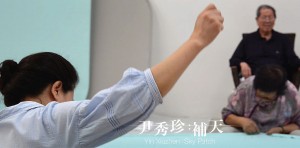 “Sky Patch” is the first solo exhibition of Yin Xiuzhen in a museum setting in Hong Kong. A leading figure in Chinese contemporary arts, Yin Xiuzhen’s exhibition explores the idea and the very action of patching and repairing one’s relationship with their surroundings and the various communities to which they belong through the common thread of textile. Yin’s art often revolves around the use of found objects that have been marked with personal traces. Through the process of collaging and rearranging old objects, she interweaves together codependent or contradicting memories and experiences, both personal and communal, thus contemplating the condition of the individual in our fast-changing political, social and natural environments. The COVID-19 pandemic, which broke out during the planning of this exhibition, has set off an unprecedented revolution, changing everything we know—from the global political and economic landscapes, to our daily lives and collective psyche. Yin has also channeled her experiences and reflections from the pandemic into her solo exhibition. Info: Centre for Heritage, Arts and Textile (CHAT), The Mills, 45 Pak Tin Par Street, Tsuen Wan, Hong Kong, Duration: 31/10/2020-28/2/2021, Days & Hours: Wed-Mon: 11:00-19:00, www.mill6chat.org
“Sky Patch” is the first solo exhibition of Yin Xiuzhen in a museum setting in Hong Kong. A leading figure in Chinese contemporary arts, Yin Xiuzhen’s exhibition explores the idea and the very action of patching and repairing one’s relationship with their surroundings and the various communities to which they belong through the common thread of textile. Yin’s art often revolves around the use of found objects that have been marked with personal traces. Through the process of collaging and rearranging old objects, she interweaves together codependent or contradicting memories and experiences, both personal and communal, thus contemplating the condition of the individual in our fast-changing political, social and natural environments. The COVID-19 pandemic, which broke out during the planning of this exhibition, has set off an unprecedented revolution, changing everything we know—from the global political and economic landscapes, to our daily lives and collective psyche. Yin has also channeled her experiences and reflections from the pandemic into her solo exhibition. Info: Centre for Heritage, Arts and Textile (CHAT), The Mills, 45 Pak Tin Par Street, Tsuen Wan, Hong Kong, Duration: 31/10/2020-28/2/2021, Days & Hours: Wed-Mon: 11:00-19:00, www.mill6chat.org
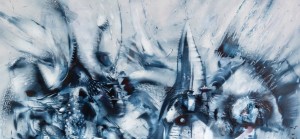 Ali Banisadr presents “Ultramarinus” his first solo exhibition in Greece. The exhibition title refers to Ultramarine, the blue color pigment used as early as the Middle Ages, which was originally extracted from the gemstone lapis lazuli and is believed to encapsulate all shades of water and skies. The religious, cultural and supernatural connotations of such a unique color are crucial to Banisadr’s expressive works, in which interrelations with ancestral forms of painting are consolidated. In this exhibition, the dialogue between key works of the artist’s oeuvre and Islamic and Chinese ceramics of the Benaki Museum collections serves as a foothold for projecting the past onto the present. The free associations of forms, sources and various narratives are driven by this powerful colour which dominates Banisadr’s ardent landscapes. In particular, a section of the exhibition features works in blue and white, which act as a kind of essay on the symbolism and “magical” properties of the color blue. Info: Curator: Polina Kosmadak, Benaki Museum, 38 Pireos & Andronikou St., Athens, Duration: 4/11/2020-31/1/2021, Days & Hours: Thu & Sat 10:00-18:00, Fri & Sun 10:00-22:00, www.benaki.org
Ali Banisadr presents “Ultramarinus” his first solo exhibition in Greece. The exhibition title refers to Ultramarine, the blue color pigment used as early as the Middle Ages, which was originally extracted from the gemstone lapis lazuli and is believed to encapsulate all shades of water and skies. The religious, cultural and supernatural connotations of such a unique color are crucial to Banisadr’s expressive works, in which interrelations with ancestral forms of painting are consolidated. In this exhibition, the dialogue between key works of the artist’s oeuvre and Islamic and Chinese ceramics of the Benaki Museum collections serves as a foothold for projecting the past onto the present. The free associations of forms, sources and various narratives are driven by this powerful colour which dominates Banisadr’s ardent landscapes. In particular, a section of the exhibition features works in blue and white, which act as a kind of essay on the symbolism and “magical” properties of the color blue. Info: Curator: Polina Kosmadak, Benaki Museum, 38 Pireos & Andronikou St., Athens, Duration: 4/11/2020-31/1/2021, Days & Hours: Thu & Sat 10:00-18:00, Fri & Sun 10:00-22:00, www.benaki.org
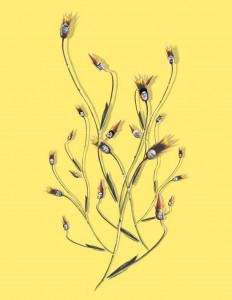 Walid Raad presents “Sweet Talk”. In the late 1980’s, in the midst of the Lebanese wars, Walid Raad committed hisself to producing photographs in Beirut. He titled this commitment Sweet Talk and referred to the various photographic self-assignments as “Commissions”. This project was also shaped by the ending of the Lebanese wars in 1989. By 1992, the security situation had calmed enough in Beirut to ensure that a large part of the city became accessible to its residents in ways it had not been for the past 17 years. It was not long after this that the reconstruction of the Beirut Central District (Beirut’s ravaged downtown area) was under way, announcing within and beyond Lebanon’s borders the possible rise from the ashes of the country itself. Sadly, the country never rose from its ashes. Instead, ashes piled up on more ashes, blood and despair as Israeli incursions and invasions never ceased; as Syria’s political, military, economic and security grip on the country tightened; as frequent bombings and assassinations paralyzed the city again and again; and as the stagnant stench of political and social discord thickened and continues to poison the air we breathe. Info: Sfeir-Semler Gallery, Admiralitätstraße 71, Hamburg, Duration: 5/11/220-23/1/2021, Days & Hours: Mon-Fri 11:00-18:00, Sat 11:00-16:00, www.sfeir-semler.com
Walid Raad presents “Sweet Talk”. In the late 1980’s, in the midst of the Lebanese wars, Walid Raad committed hisself to producing photographs in Beirut. He titled this commitment Sweet Talk and referred to the various photographic self-assignments as “Commissions”. This project was also shaped by the ending of the Lebanese wars in 1989. By 1992, the security situation had calmed enough in Beirut to ensure that a large part of the city became accessible to its residents in ways it had not been for the past 17 years. It was not long after this that the reconstruction of the Beirut Central District (Beirut’s ravaged downtown area) was under way, announcing within and beyond Lebanon’s borders the possible rise from the ashes of the country itself. Sadly, the country never rose from its ashes. Instead, ashes piled up on more ashes, blood and despair as Israeli incursions and invasions never ceased; as Syria’s political, military, economic and security grip on the country tightened; as frequent bombings and assassinations paralyzed the city again and again; and as the stagnant stench of political and social discord thickened and continues to poison the air we breathe. Info: Sfeir-Semler Gallery, Admiralitätstraße 71, Hamburg, Duration: 5/11/220-23/1/2021, Days & Hours: Mon-Fri 11:00-18:00, Sat 11:00-16:00, www.sfeir-semler.com
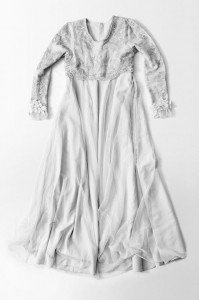 Laia Abril’s exhibition “On Rape“ is the second chapter to her project “A History of Misogyny” that expands her ongoing visual archive of the systemic control of women’s bodies across time and cultures. By scrutinizing, conceptualizing and visualizing diverse miscarriages of justice across historical regulations, toxic dynamics and victims’ testimonies, the project aims to call out the institutional rape culture prevalent in societies around de world. Laia Abril is looking at rape by exploring how concepts of myths, power, and law, relate to the constructions of the notion of masculinity and sexual violence. The artist has been triggered by a local news that impressed her deeply. In 2018 the Spanish Court set free 5 man who gang-raped a 18-year-old with a sentence of abuse instead of rape, that would eventually call into question the Spanish legislative on rape. By looking back to history, Laia Abril could identify gender-based stereotypes and myths, prejudices and misconceptions, that have prevailed and perpetuated the rape culture. Through a painstaking research on miscarriages of justice and victim-blaming attitudes, this work evokes how still today society blames victims of sexual assault and normalizes sexual violence. Info: Foam, Keizersgracht 609, Amsterdam, Duration: 6/11/2020-10/1/2021, Days & Hours: Mon-Wed & Sat-Sun 10:00-18:00, Thu-Fri 10:00-21:00 (reservation is required), www.foam.org
Laia Abril’s exhibition “On Rape“ is the second chapter to her project “A History of Misogyny” that expands her ongoing visual archive of the systemic control of women’s bodies across time and cultures. By scrutinizing, conceptualizing and visualizing diverse miscarriages of justice across historical regulations, toxic dynamics and victims’ testimonies, the project aims to call out the institutional rape culture prevalent in societies around de world. Laia Abril is looking at rape by exploring how concepts of myths, power, and law, relate to the constructions of the notion of masculinity and sexual violence. The artist has been triggered by a local news that impressed her deeply. In 2018 the Spanish Court set free 5 man who gang-raped a 18-year-old with a sentence of abuse instead of rape, that would eventually call into question the Spanish legislative on rape. By looking back to history, Laia Abril could identify gender-based stereotypes and myths, prejudices and misconceptions, that have prevailed and perpetuated the rape culture. Through a painstaking research on miscarriages of justice and victim-blaming attitudes, this work evokes how still today society blames victims of sexual assault and normalizes sexual violence. Info: Foam, Keizersgracht 609, Amsterdam, Duration: 6/11/2020-10/1/2021, Days & Hours: Mon-Wed & Sat-Sun 10:00-18:00, Thu-Fri 10:00-21:00 (reservation is required), www.foam.org
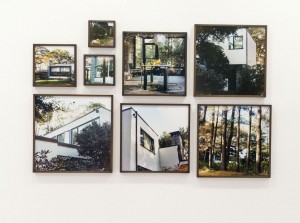 The group exhibition “BPAC Photo”, is exclusively dedicated to photography. In a way of pursuing the spirit of Paris Photo in this unprecedented context, the gallery presents an eclectic gathering of works carried out by artists with singular practices. Embodying the vast array of themes and artistic origins within the gallery, the exhibition intends to be a symbol of this multicultural medium. Alejandra Laviada’s artistic practice is focused on creating art works at the junctions of photography, painting and sculpture. Lake Verea is an artist duo working on the ruin of modern architecture. Caio Reisewitz focuses on collages, which he uses to criticize the environmental issues of his native country. Maria Friberg makes the tie a symbol of male domination. In this last series Miguel Rothschild once again combines two fundamental references for all his work, Romanticism as an artistic movement of the 19th century, but also by religion. Niccolò Montesi photographs the architectural icons of the Adriatic Riviera as future memories of the current health crisis. The work of Peter Stridsberg (Sweden) is as much photographic as it is scenographic. Always focused on the notion of habitat, Stridsberg strives to bring new perspectives to the viewer. Info: Bendana | Pinel Art Contemporain, 4 rue du Perche, Paris, Duration: 7/11-19/12/2020, Days & Hours: Tue-Sat 11:00-19:00, www.bendana-pinel.com
The group exhibition “BPAC Photo”, is exclusively dedicated to photography. In a way of pursuing the spirit of Paris Photo in this unprecedented context, the gallery presents an eclectic gathering of works carried out by artists with singular practices. Embodying the vast array of themes and artistic origins within the gallery, the exhibition intends to be a symbol of this multicultural medium. Alejandra Laviada’s artistic practice is focused on creating art works at the junctions of photography, painting and sculpture. Lake Verea is an artist duo working on the ruin of modern architecture. Caio Reisewitz focuses on collages, which he uses to criticize the environmental issues of his native country. Maria Friberg makes the tie a symbol of male domination. In this last series Miguel Rothschild once again combines two fundamental references for all his work, Romanticism as an artistic movement of the 19th century, but also by religion. Niccolò Montesi photographs the architectural icons of the Adriatic Riviera as future memories of the current health crisis. The work of Peter Stridsberg (Sweden) is as much photographic as it is scenographic. Always focused on the notion of habitat, Stridsberg strives to bring new perspectives to the viewer. Info: Bendana | Pinel Art Contemporain, 4 rue du Perche, Paris, Duration: 7/11-19/12/2020, Days & Hours: Tue-Sat 11:00-19:00, www.bendana-pinel.com
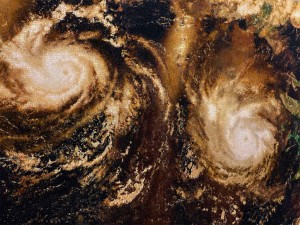 Teresita Fernández’s solo exhibition “Maelstrom” features a new series of monumental sculptures and installations that unapologetically visualize the enduring violence and devastation ignited by colonization. Focusing on the Caribbean archipelago, the first point of colonial contact in the Americas, Fernández challenges us to consider a more nuanced reading of people and place, one that looks beyond dominant, continental narratives and instead considers the region as emblematic of an expansive and decentralized state of mind. The artist conjures images of catastrophic weather and natural disasters as metaphors for centuries of injustice, U.S. military intervention, ecological destruction, and systemic oppression as a means of reflecting on the sociopolitical turmoil and abandon to which the region and its populations have been (and continue to be) subjected. By evoking the generative forces of nature, Fernández implements a redemptive quality that counters reductive and exoticized clichés of the region often vulgarly associated with tropical paradise and leisure. Info: Lehmann Maupin Gallery, 501 Wes5 24th Street, New York, Duration: 12/11/2020-9/1/20221, Days & Hours: Tue-Sat 10;00-18:00, www.lehmannmaupin.com
Teresita Fernández’s solo exhibition “Maelstrom” features a new series of monumental sculptures and installations that unapologetically visualize the enduring violence and devastation ignited by colonization. Focusing on the Caribbean archipelago, the first point of colonial contact in the Americas, Fernández challenges us to consider a more nuanced reading of people and place, one that looks beyond dominant, continental narratives and instead considers the region as emblematic of an expansive and decentralized state of mind. The artist conjures images of catastrophic weather and natural disasters as metaphors for centuries of injustice, U.S. military intervention, ecological destruction, and systemic oppression as a means of reflecting on the sociopolitical turmoil and abandon to which the region and its populations have been (and continue to be) subjected. By evoking the generative forces of nature, Fernández implements a redemptive quality that counters reductive and exoticized clichés of the region often vulgarly associated with tropical paradise and leisure. Info: Lehmann Maupin Gallery, 501 Wes5 24th Street, New York, Duration: 12/11/2020-9/1/20221, Days & Hours: Tue-Sat 10;00-18:00, www.lehmannmaupin.com
